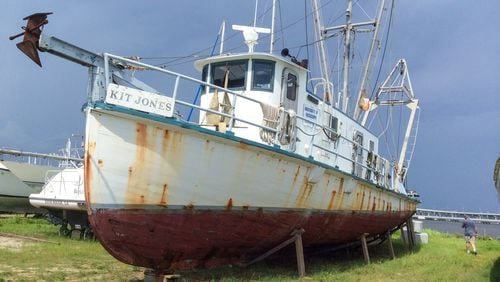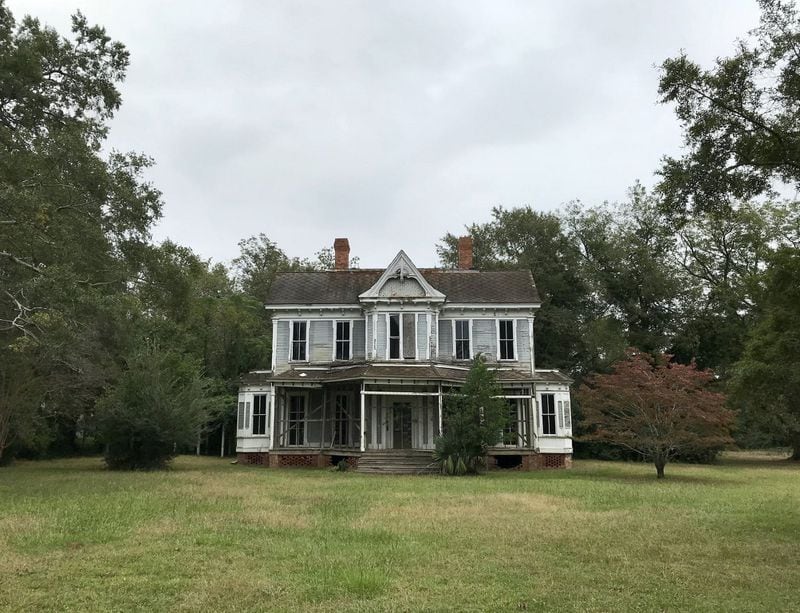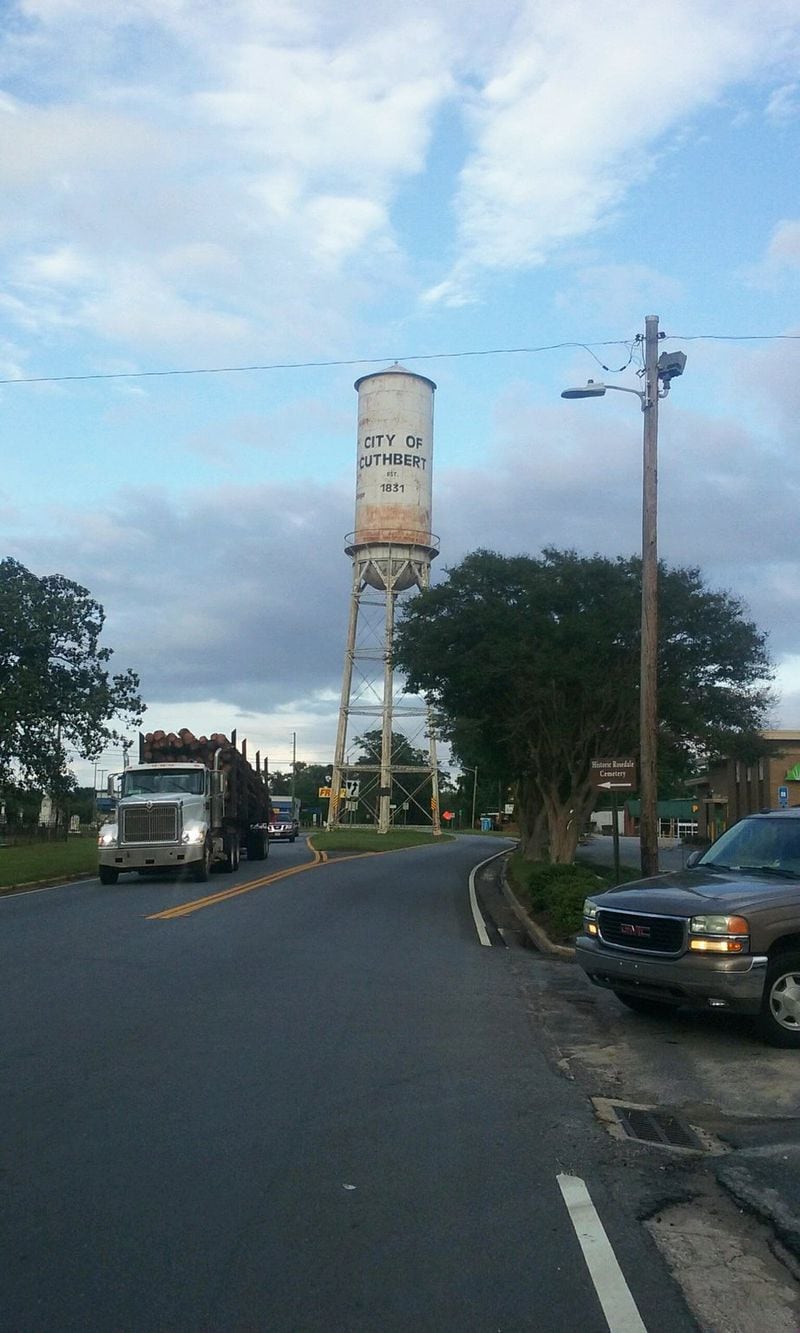Each year for the past 13, the Georgia Trust for Historic Preservation creates a list of “Places in Peril,” and this year’s group is an unusual lot:
It includes a wooden tugboat, some archaeological sites in Savannah and a Cuthbert water tower.
In the past, those places in peril were usually historic houses, businesses and other structures. This year includes such structures, but also departs from the norm.
"We've never listed a boat before," said Mark C. McDonald, president and CEO of the Trust. "It's sitting on the Mississippi, in dry dock."
That boat is the 60-foot Kit Jones, a wood-hulled tugboat built on Sapelo Island in the late 1930s by tobacco company heir R.J. Reynolds Jr. It served as a U.S. Coast Guard fireboat, a freight hauler and a passenger vessel, running between the island and the mainland.
The Kit Jones was used in research projects for the University of Mississippi, but has been stored in Biloxi since 2013. The McIntosh Rod & Gun Club Inc. — one of McIntosh County's public/private partnerships — hopes to truck it back to Georgia for use as an excursion vessel.
Notable for its origins and its many uses, the boat tells the story of coastal Georgia. To have it restored and put back to use on excursions “would not only be a good use for it, it would be another resource to bring tourists to the area,” said McDonald.
While the Kit Jones traveled far from home, the Cuthbert water tower hasn’t gone anywhere. It’s still standing in between the eastbound and westbound lanes of U.S. 82, quietly rusting.
“Although it has not been used as a water tower since the 1970s, it is an iconic symbol for Randolph County,” writes the Trust.
It is also the only known water tower in the middle of a federal highway, according to the Trust. When U.S. 82 came through this South Georgia town in the 1940s, Cuthbert said it didn't have the money to move the tower, so the highway folks just built around it.
Preserving historic structures is sometimes a matter of holding on to a touchstone that is entwined with the image of a place — like the water tower in Cuthbert. Other times, it is a matter of keeping a structure intact that encodes a particular piece of history.
Several of the sites listed, including two Druid Hills homes, a Peachtree Road book bindery and a crumbling but handsome old residence in beautiful Madison, are in private hands.
Do the rights of property owners conflict with historic preservation? Homeowners or developers who want to sell to the highest bidder may decide that historic significance is outweighed by economic concerns.
In those cases, preservationists such as McDonald must find ways to compete with the market. He says that’s doable.
“We have a track record at the Trust of convincing people to save historic buildings by showing them they can be economically sustainable by using some of the tax incentives that exist under federal and state law,” he said. “A lot of people don’t know about those incentives.”
Among the trust's victories is Mimosa Hall, which was on last year's list, but was purchased by the city of Roswell.
Below are some of the other historic structures on the Trust's list. (To see the full list, including those archaeological sites, go to www.georgiatrust.org):
A.J. Gillen Department Store, Maxeys (population 224):
Built in 1907 when Maxeys, east of Athens, was a booming cotton town, the A.J. Gillen Department Store was an upscale store that boasted the only elevator in the county. The collapse of the cotton economy in 1929-1930 led to the store’s closure. The building was subsequently used as a general merchandise store and a small plant for the manufacture of paper boxes before becoming vacant for many years.
Bibb City Elementary School, Columbus:
Bibb City Elementary School was constructed in 1915 by the Bibb Manufacturing Co. for the children of its employees. Part of the roof has collapsed, and it is currently vacant and boarded up, though a Columbus group is working to save it.
Fire Station No. 2, Rome:
Built in 1927, Fire Station No. 2 is Rome’s second-oldest fire station and one of South Rome’s last standing historic nonresidential buildings. It was given to a neighboring church, which is using it mostly for storage.
Fort Valley Freight Depot, Fort Valley:
For more than a century, the 1871 Fort Valley Freight Depot served as the key point for shipping and distribution of the South’s industrial and agricultural products. Only 10 depots of similar design remain standing in Georgia.
It sits between active tracks used by the Norfolk Southern Railroad and the Georgia Southern Railway. The railroads have deeded it to the Fort Valley Development Authority, but require that it be moved. Otherwise, it will be demolished.
Foster-Thomason-Miller House, Madison:
Built in 1883, the Foster-Thomason-Miller house is part of Madison’s National Register Historic District, and an outstanding example of the Aesthetic Movement in the South. In 2001, a fire broke out in the back of the house and severely damaged a rear addition. Although it did not spread into the historic structure, the original house suffered significant smoke and water damage.
The current owners plan to subdivide and build 37 houses on the surrounding 8 acres.
National Library Bindery Co., Atlanta:
Designed in 1929 by noted Atlanta architects A. Ten Eyck Brown and Alfredo Barili Jr., the National Library Bindery Co. was the Southeast’s first library bindery and is one of the oldest remaining structures on Peachtree Road. Today the building is home to Peachtree Battle Antiques.
The current owners have permission to demolish this and other structures to build an apartment building.
About the Author









